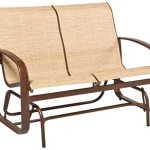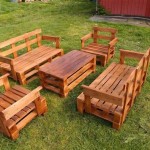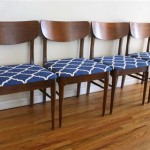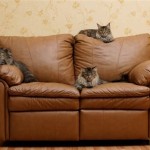Chalk Paint For Bedroom Furniture: A Comprehensive Guide
Chalk paint has surged in popularity within the realm of home décor, particularly for breathing new life into existing furniture. Its user-friendly application, matte finish, and versatility make it a compelling choice for both novice and experienced DIY enthusiasts. This article provides a detailed exploration of using chalk paint on bedroom furniture, covering preparation, application techniques, finishing, and considerations for achieving optimal results.
Understanding Chalk Paint and Its Properties
Chalk paint, distinct from chalkboard paint, is a decorative paint known for its highly pigmented, matte finish. Its key characteristic is its excellent adhesion, which often eliminates the need for extensive priming or sanding on many surfaces. This paint's composition frequently includes pigments, binders, and calcium carbonate, contributing to its chalky texture. This unique texture not only provides an aesthetic appeal but also allows for easier distressing techniques, creating a vintage or antique appearance. The water-based nature of most chalk paints makes them low in volatile organic compounds (VOCs), a beneficial factor for indoor use. However, it is crucial to note that chalk paint is porous and requires a sealant or wax to protect the painted surface from moisture and wear.
Before embarking on a chalk paint project, it is essential to comprehend the specific properties of the chosen brand. Different brands may vary in their pigment concentration, drying time, and overall finish. Reading the manufacturer's instructions is paramount for achieving the desired outcome. Factors such as the initial condition of the furniture, the existing finish, and the intended aesthetic will influence the choice of chalk paint and subsequent techniques employed.
Preparing Bedroom Furniture for Chalk Paint
Proper preparation is the cornerstone of any successful chalk paint project. Although chalk paint often boasts of minimal surface preparation, a few key steps can significantly enhance the final result and ensure long-lasting adhesion. The initial assessment involves a thorough cleaning of the furniture. This removes any accumulated dirt, grease, wax, or polish that could hinder the paint's ability to bond effectively. A mild detergent and water solution are typically sufficient for this purpose. For stubborn residues, a degreaser may be necessary. After cleaning, the furniture should be rinsed thoroughly and allowed to dry completely.
Next, inspect the furniture for any imperfections such as loose veneer, chipping paint, or structural instability. Addressing these issues before painting is crucial. Loose veneer should be re-glued or removed entirely. Chipping paint can be gently scraped away, and any structural issues should be repaired. While chalk paint often minimizes the need for extensive sanding, it can be beneficial to lightly sand glossy surfaces to provide a better "key" for the paint. A fine-grit sandpaper (e.g., 220-grit) is generally recommended for this purpose. This light sanding roughens the surface slightly, creating a better adhesion point for the chalk paint. After sanding, thoroughly remove any dust particles with a tack cloth or a damp cloth.
In some cases, priming may be necessary. For instance, if the furniture has a dark stain or is made of wood that is known to bleed tannins (e.g., cherry or mahogany), a stain-blocking primer is recommended. This prevents the tannins from seeping through the chalk paint and discoloring the finish. Similarly, if the furniture has a particularly slick or non-porous surface, a bonding primer can improve the paint's adhesion. Ensure the primer is fully dry before proceeding with the chalk paint application.
Applying Chalk Paint to Bedroom Furniture: Techniques and Best Practices
The application of chalk paint is generally straightforward, but certain techniques can optimize the final appearance. The choice of brush is a significant factor. A high-quality brush with synthetic bristles is typically recommended for chalk paint application. Natural bristle brushes can sometimes leave brushstrokes, while synthetic bristles tend to provide a smoother finish. Consider the size of the brush relative to the furniture's surface area. A smaller brush is suitable for intricate details and edges, while a larger brush is more efficient for covering larger surfaces.
Begin by stirring the chalk paint thoroughly to ensure even pigment distribution. Apply the paint in thin, even coats, working in the direction of the wood grain where applicable. Avoid applying too much paint at once, as this can lead to drips and runs. Allow each coat to dry completely before applying the next. The drying time will vary depending on the brand of chalk paint and the ambient humidity. Typically, two coats of chalk paint are sufficient to achieve full coverage. However, depending on the initial color of the furniture and the desired opacity, a third coat may be necessary.
For a smooth, modern finish, apply the chalk paint with smooth, even brushstrokes. To minimize brushstrokes, consider thinning the chalk paint slightly with water. Alternatively, for a more textured, rustic finish, apply the paint with short, choppy brushstrokes. Experiment with different application techniques to achieve the desired aesthetic. One popular technique involves "dry brushing," where a small amount of paint is applied to the brush, then most of it is wiped off onto a paper towel before applying it to the furniture. This creates a subtle, textured effect.
Distressing is a hallmark of chalk paint projects, allowing for the creation of a vintage or antique look. Distressing involves removing small amounts of paint from specific areas of the furniture to reveal the underlying wood or paint layers. This can be achieved using sandpaper, a damp cloth, or even steel wool. Focus on areas that would naturally experience wear and tear, such as edges, corners, and raised details. Apply varying degrees of pressure to create a realistic, aged appearance. After distressing, thoroughly remove any dust created by the sanding process.
Sealing and Protecting Chalk-Painted Bedroom Furniture
As previously mentioned, chalk paint is porous and requires a sealant to protect it from moisture, stains, and everyday wear and tear. The two most common types of sealants used with chalk paint are wax and clear coat (varnish or lacquer). Wax provides a soft, matte finish and enhances the chalky texture of the paint. However, wax can be less durable than clear coat and requires periodic reapplication. Clear coat, on the other hand, provides a more durable and water-resistant finish. It is available in various sheens, from matte to glossy, allowing for customization of the final appearance.
If opting for wax, apply it in thin, even coats using a wax brush or a lint-free cloth. Work the wax into the paint, ensuring that it penetrates all crevices and details. Allow the wax to dry for the recommended time (typically 15-30 minutes) before buffing it with a clean, lint-free cloth. Buffing removes excess wax and creates a smooth, polished finish. Multiple coats of wax may be applied for added protection.
If opting for clear coat, choose a water-based product to avoid yellowing over time. Apply the clear coat in thin, even coats using a brush or a spray gun. Avoid applying too much clear coat at once, as this can lead to drips and runs. Allow each coat to dry completely before applying the next. Two to three coats of clear coat are typically sufficient for adequate protection. Lightly sand between coats with fine-grit sandpaper to ensure a smooth finish.
The choice between wax and clear coat depends on the desired aesthetic and the intended use of the furniture. For bedroom furniture that is not subjected to heavy use, wax may be sufficient. However, for furniture that is frequently used or exposed to moisture, clear coat is a more durable option.
Troubleshooting Common Issues with Chalk Paint
Despite its user-friendly nature, chalk paint projects can sometimes encounter challenges. One common issue is poor adhesion, where the paint fails to bond properly to the surface. This can be caused by inadequate surface preparation, such as insufficient cleaning or sanding. To address this, thoroughly clean and sand the surface again, ensuring that all dirt, grease, or polish is removed. If the issue persists, consider using a bonding primer before applying the chalk paint.
Another common issue is brushstrokes. While some texture can be desirable, excessive brushstrokes can detract from the finished look. To minimize brushstrokes, use a high-quality brush with synthetic bristles, thin the chalk paint slightly with water, and apply the paint in thin, even coats. Consider using a foam roller for larger, flat surfaces. If brushstrokes are already present, they can be sanded down lightly with fine-grit sandpaper before applying another coat of paint.
Uneven coverage can also be a problem, particularly when painting dark furniture with light-colored chalk paint. To achieve even coverage, apply multiple thin coats of paint, allowing each coat to dry completely before applying the next. A primer can also help to create a more uniform base for the chalk paint.
Finally, yellowing can occur over time, particularly when using oil-based sealants or certain types of wax. To prevent yellowing, use water-based clear coats and waxes that are specifically formulated for use with chalk paint. Avoid exposing the painted furniture to direct sunlight for prolonged periods, as this can also contribute to yellowing.

Master Bedroom Chalk Painted Furniture Makeover Annie Sloan Paris Grey Karins Kottage

Furniture Painting Again 3rd Times The Charm Lilypad Cottage

Bedroom Furniture Makeover Using Chalk Paint Easy Farmhouse Diy

Chalk Paint Master Bedroom Furniture Makeover Over The Big Moon

Chalk Paint Furniture Technique Hallstrom Home

Night Stand Chalk Paint Makeover Simply Rural

How To Transform Furniture With Chalk Paint Chalking Up Success

Our Painted Bedroom Furniture Confessions Of A Serial Do It Yourselfer

Chalk Paint Bedroom Furniture Tutorial

Master Bedroom Chalk Painted Furniture Makeover Annie Sloan Paris Grey Karins Kottage
See Also








